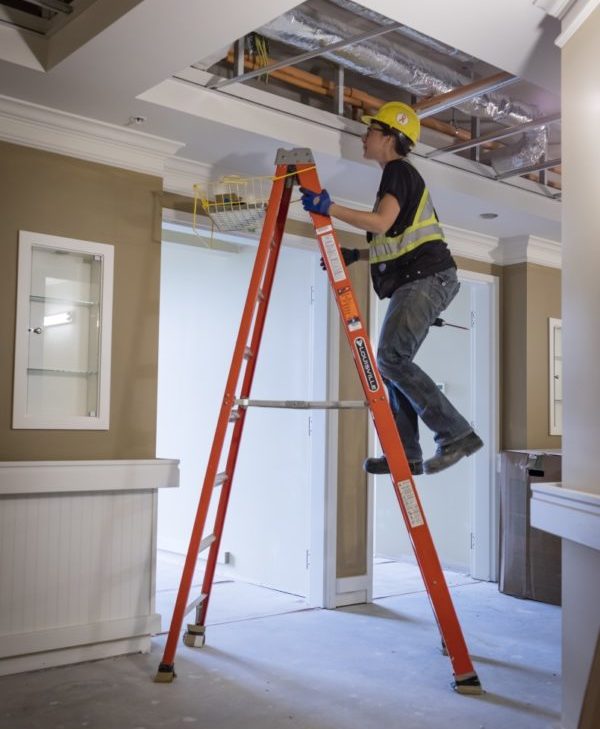Ladder Safety
When we use ladders frequently, whether at work or at home, we run the risk of becoming complacent. Make sure every time you step on a ladder you are mindful of the task at hand and you have reviewed the labels on the ladder. Once you have confirmed that the ladder is in good working condition, it’s also important choose the right size and style of ladder and be sure to follow the directions on the ladder before you climb.
Consider these aspects of the job:
- How high do you need to reach?
- How much weight will the ladder need to hold?
- Are there any electrical lines overhead?
Consider the following safety procedures:
- Metal ladders shall not be used in the vicinity of electrical circuits.
- A straight or extension ladder should be placed 1foot away from the surface it’s resting on for every 4 feet of the ladder’s working length, the distance along the side rail from the ground to the top support point.
- A straight ladder should be long enough to extend at least three rungs above the level to which the user is climbing.
- Never place a ladder on a box, barrel or other unstable base to gain additional height.
- Never stand on the top step of any ladder.
- Never carry articles in hand while climbing ladders. Use a hand line to raise and lower tools and materials or suspend tools in a belt.
- When ascending or descending a ladder, always face the ladder and have free use of both hands.
- Always keep three points of contact with the ladder: Two hands and one foot or two feet and one hand.
- Clean muddy or slippery shoes before climbing any ladder and keep ladder rungs clean and free of grease and oil.
- Block or guard doorways near any type of ladder or take other precautions to prevent accidental contact that might upset the ladder.
By Renee Hudson, Loss Prevention Consultant
